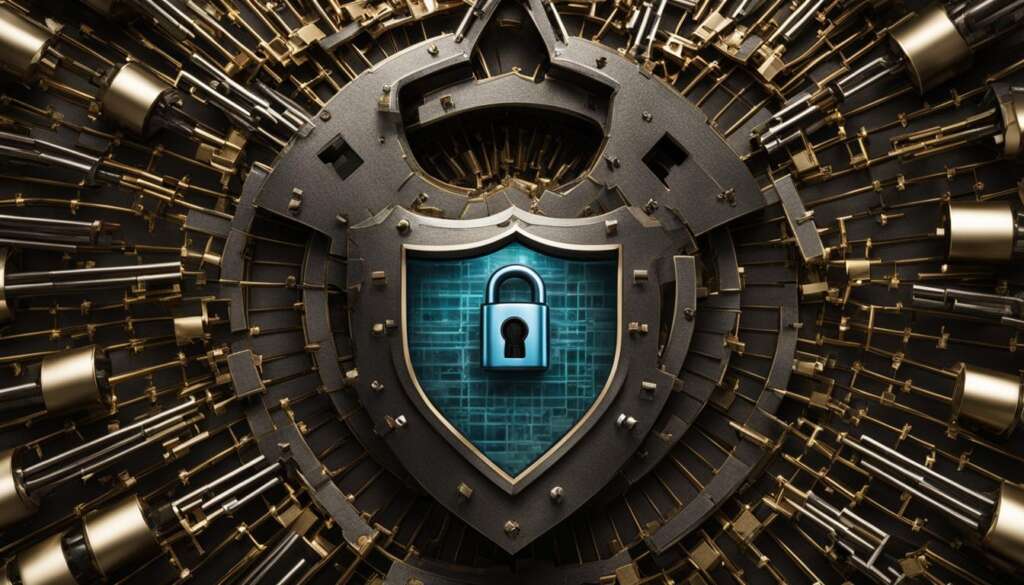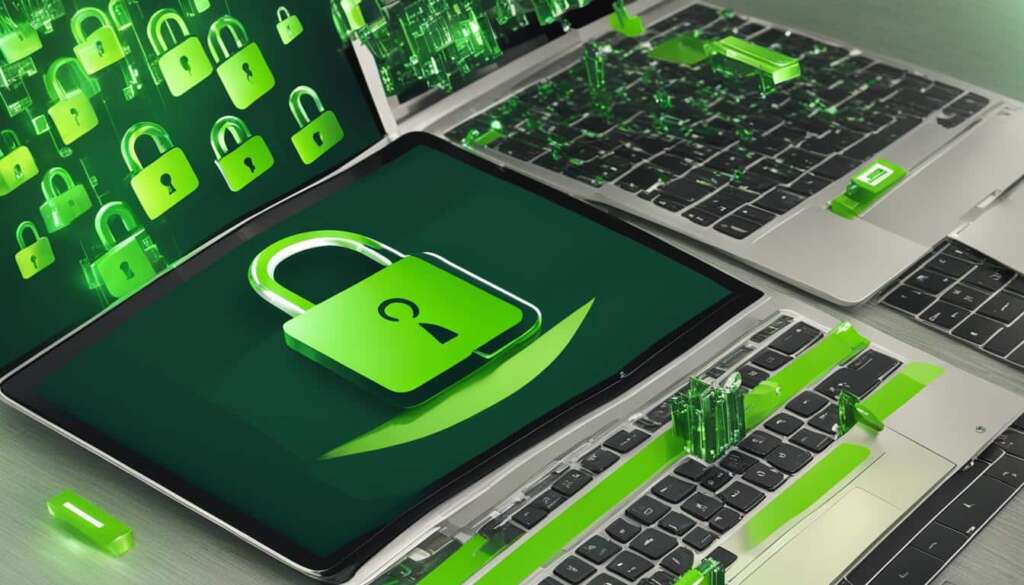Table of Contents
In an era where digital technology is at the heart of educational institutions, the importance of robust cybersecurity cannot be overstated. The increasing reliance on digital platforms for teaching, learning, and administration has made schools prime targets for cyber threats. The education sector has faced an unprecedented challenge in cybersecurity, with a significant increase in incidents such as data breaches and ransomware attacks in K-12 schools. The shift to remote learning during the pandemic further highlighted the need for robust cybersecurity measures. Adopting a layered defense strategy, which includes strong DNS management, training for staff and students, centralized IT management, routine network scans, robust anti-virus solutions, application whitelisting, and physical security measures, is crucial for enhancing cybersecurity in educational institutions.
The Importance of Layered Defense in Educational Institutions
Layered defense, also known as defense in depth, is a critical strategy in ensuring the cybersecurity of educational institutions. With the increasing number of cyber threats targeting schools and colleges, a single layer of protection is no longer sufficient. Implementing a layered defense strategy involves multiple security measures that work together to create a robust cybersecurity framework.
One important aspect of a layered defense strategy is effective DNS management. By strengthening the Domain Name System (DNS), educational institutions can prevent cyberattacks such as phishing attempts and malware infections. Educated and vigilant staff are also crucial to mitigating cybersecurity risks. Training employees and students on safe online practices and recognizing potential threats can help prevent security breaches.
Centralized IT management is another key component of a layered defense strategy. It allows for comprehensive monitoring and management of the network, enabling quick response to any potential security incidents. Routine network scans are essential for detecting and removing malware. Robust anti-virus solutions and application whitelisting ensure that only authorized and secure software runs on the network. Physical security measures, such as restricting access to sensitive areas and implementing surveillance systems, further enhance the overall cybersecurity posture of an educational institution.
Overall, a layered defense approach is essential in safeguarding educational institutions from cyber threats. By implementing measures such as DNS management, educated and vigilant staff, centralized IT management, routine network scans, robust anti-virus solutions, application whitelisting, and physical security measures, educational institutions can create a secure digital environment for their students and staff.
Faronics: A Leading Provider of School Cybersecurity Solutions
When it comes to protecting educational institutions from cyber threats, Faronics is a name that stands out. With their expertise in education cybersecurity, Faronics offers tailored solutions to address the unique challenges faced by schools and colleges. One of their notable offerings is Deep Freeze, a software that plays a crucial role in maintaining a robust cybersecurity posture.
Deep Freeze is designed to restore computers to a secure state with each reboot, countering malware threats and ensuring consistency and reliability in computer performance. This feature is particularly valuable in educational settings, where system uniformity is key. By using Deep Freeze, educational institutions can prevent unauthorized changes, eliminate malware, and maintain a secure environment for students and staff.
Faronics’ commitment to cybersecurity goes beyond just the software they provide. They actively work with educational institutions to manage extensive networks with limited resources and streamline IT operations. A case study with Florida’s Gilchrist County School District showcases the effectiveness of Faronics’ solutions in enhancing cybersecurity. By partnering with Faronics, schools can develop a robust cybersecurity strategy and protect their digital assets.
| Benefits of Faronics’ Solutions for Educational Institutions | Features of Faronics’ Deep Freeze |
|---|---|
| 1. Enhanced protection against cyber threats. | 1. Restores computers to a secure state with each reboot. |
| 2. Maintains system uniformity for a secure environment. | 2. Counters malware threats and prevents unauthorized changes. |
| 3. Streamlines IT operations and network management. | 3. Ensures consistency and reliability in computer performance. |
| 4. Efficient utilization of limited resources. | 4. Eliminates malware and safeguards digital assets. |
By partnering with Faronics, educational institutions can enhance their cybersecurity stance and safeguard sensitive information. With Deep Freeze and other solutions tailored for the education sector, Faronics provides the necessary tools and expertise to create a secure digital environment for students, teachers, and staff.
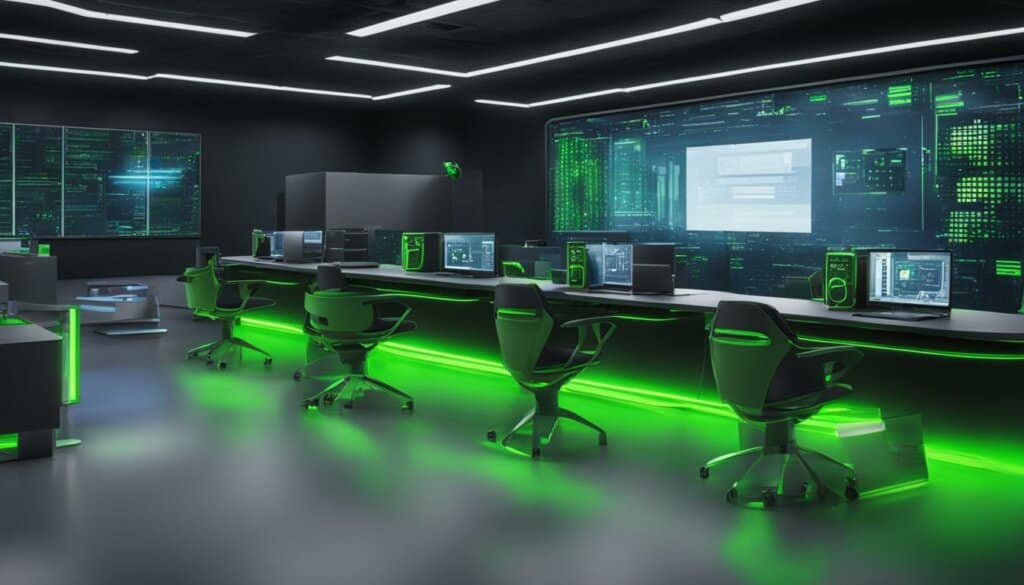
Partnerships and Resources for Cybersecurity in Education from CISA
CISA (Cybersecurity and Infrastructure Security Agency) recognizes the crucial role of school security in ensuring the safety of students and staff. As part of their commitment, CISA actively partners with educational institutions and various organizations across the country to offer a wealth of resources, programs, and tools to mitigate both digital and physical threats.
One of the notable resources provided by CISA is the Federal School Safety Clearinghouse, which serves as a comprehensive hub for school security information. It offers a wide range of resources and guidelines from CISA and other federal agencies to help educational institutions develop robust school security plans and create safe learning environments.
“At CISA, we believe that cybersecurity education plays a pivotal role in keeping our educational institutions safe. That’s why we actively promote cybersecurity education initiatives and encourage students to pursue cybersecurity degree programs,” says [insert CISA representative name and title].
In addition to the Federal School Safety Clearinghouse, educational institutions can also benefit from the wealth of resources available on SchoolSafety.gov. This website provides valuable information on school safety and security, including best practices, training materials, emergency planning resources, and more. By leveraging these resources, schools can enhance their cybersecurity posture and better protect their students, staff, and sensitive information.
| Resources | Description |
|---|---|
| Federal School Safety Clearinghouse | A comprehensive hub for school security information, offering resources and guidelines from CISA and other federal agencies. |
| SchoolSafety.gov | A website providing valuable information on school safety and security, including best practices, training materials, and emergency planning resources. |
By actively partnering with educational institutions and providing these resources, CISA aims to foster a culture of cybersecurity awareness and preparedness in schools across the nation.
Quote:
“At CISA, we believe that cybersecurity education plays a pivotal role in keeping our educational institutions safe. That’s why we actively promote cybersecurity education initiatives and encourage students to pursue cybersecurity degree programs,” says [insert CISA representative name and title].
Best Practices for Cybersecurity in Educational Institutions
Implementing proper cybersecurity measures is crucial for educational institutions to protect sensitive data and mitigate the risks of cyber threats. By following best practices in cybersecurity, schools can create a safe learning environment for students and safeguard their digital assets. The following are some key best practices that educational institutions should consider:
- Training and Education: Educating staff and students about safe online practices, cybersecurity threats, and common scams is essential. Regular training sessions can help build a solid foundation for cybersecurity awareness and responsible online behavior.
- Multifactor Authentication: Implementing multifactor authentication (MFA) adds an extra layer of security to access servers and data. This method requires users to provide multiple pieces of evidence to verify their identities, such as passwords, security questions, or biometric factors.
- Limited Access to Servers and Data: Restricting access to servers and data ensures that only authorized individuals have the necessary permissions. Implementing a role-based access control (RBAC) system can help manage user privileges effectively.
- Regular Software and System Updates: Keeping software and operating systems up to date is crucial to patch vulnerabilities and protect against evolving threats. Regular updates ensure that systems are equipped with the latest security patches and bug fixes.
- Comprehensive Protection Measures: Deploying a range of security measures, such as firewalls, antivirus software, and intrusion detection systems, can help defend against different types of cyber threats. A layered approach to security provides multiple lines of defense.
- Data Backup and Recovery: Regularly backing up data and having a robust recovery plan in place is essential to mitigate the impact of cybersecurity breaches. Backup copies of important data should be stored securely to prevent unauthorized access.
By adhering to these best practices, educational institutions can significantly enhance their cybersecurity posture and ensure the privacy and safety of their digital assets.
Table: Cybersecurity Best Practices in Educational Institutions
| Best Practice | Description |
|---|---|
| Training and Education | Educate staff and students about cybersecurity threats and safe online practices. |
| Multifactor Authentication | Implement additional layers of identity verification for accessing servers and data. |
| Limited Access to Servers and Data | Restrict access to authorized individuals and implement role-based access control. |
| Regular Software and System Updates | Keep software and operating systems up to date with the latest security patches. |
| Comprehensive Protection Measures | Deploy multiple security measures, including firewalls, antivirus software, and intrusion detection systems. |
| Data Backup and Recovery | Regularly back up important data and have a robust recovery plan in case of cybersecurity breaches. |
The Role of Technology in Enhancing Cybersecurity in Education
The digital transformation in education has enabled educational institutions to leverage advanced technologies for teaching, learning, and administration. However, with this digital evolution comes the need for robust cybersecurity measures to protect sensitive data and ensure a safe learning environment. Technology plays a vital role in enhancing cybersecurity in education by providing tools and solutions that address the unique challenges faced by educational institutions.
One aspect of technology’s role in cybersecurity is the handling of sensitive data. Educational institutions store and process a vast amount of personal and financial information, academic records, and research data. It is essential to implement secure storage solutions that protect this sensitive data from unauthorized access and potential cyber threats. Utilizing encryption technologies and secure data storage systems can provide an additional layer of protection against data breaches.
Additionally, the adoption of smart technologies in educational institutions introduces new cybersecurity considerations. Internet of Things (IoT) devices, such as smart boards and connected devices, bring convenience and efficiency to the classroom but also increase the attack surface for malicious actors. Educational institutions need to ensure that these devices are properly secured, regularly updated with the latest firmware and security patches, and have proper access controls.
| Technology in Cybersecurity | Digital Transformation in Education | Sensitive Data Handling | Smart Technologies | Secure Storage |
|---|---|---|---|---|
| Secure data storage systems | Leveraging advanced technologies for teaching and administration | Encryption technologies for protecting sensitive data | IoT device security | Secure storage solutions for sensitive data |
| Implementation of multi-factor authentication | Enhanced accessibility and collaboration through digital platforms | Data access controls and permissions | Securing connected devices in the classroom | Protecting data from unauthorized access and potential cyber threats |
| Network monitoring and intrusion detection systems | Efficient and streamlined administrative processes | Regular data backups and disaster recovery plans | Proactive threat detection and response | Implementing encryption technologies for data protection |
Furthermore, technology provides educational institutions with advanced tools and solutions for network monitoring, intrusion detection, and threat intelligence. Network monitoring tools help identify and mitigate potential cyber threats, while intrusion detection systems alert administrators of any unauthorized access attempts. By leveraging these technologies, educational institutions can proactively detect and respond to potential cyber threats, reducing the risk of data breaches and other cybersecurity incidents.
In conclusion, technology plays a critical role in enhancing cybersecurity in education. From secure data storage solutions to the implementation of multi-factor authentication and advanced threat detection systems, technology enables educational institutions to protect sensitive data, safeguard against cyber threats, and create a secure learning environment for students and staff.

Staying Ahead of Evolving Cyber Threats in Educational Institutions
The cybersecurity landscape is constantly evolving, with new threats emerging regularly. Educational institutions need to stay one step ahead of these evolving cyber threats to ensure the safety and security of their digital assets. Regular software updates and operating system updates play a crucial role in maintaining a robust cybersecurity posture.
By regularly updating software, educational institutions can patch vulnerabilities and address security weaknesses that cybercriminals may exploit. Keeping operating systems up to date helps ensure that the latest security features and enhancements are in place, providing a strong line of defense against evolving cyber threats.
In addition to keeping software and operating systems up to date, comprehensive protection measures should be in place. This includes implementing firewalls, antivirus software, and other security solutions designed to detect and prevent various types of cyber threats. It is also crucial to stay informed about the latest threats and trends in cybersecurity to adapt and respond effectively.
To ensure the effectiveness of the overall cybersecurity strategy, it is essential to regularly test security measures. This can involve conducting vulnerability assessments and penetration testing to identify any weaknesses or vulnerabilities in the system. By proactively testing security measures, educational institutions can address any issues and enhance their cyber defenses.
The Importance of Backup and Recovery in Educational Institutions
Ensuring the safety and availability of data is paramount in educational institutions, where the loss or theft of valuable information can have serious consequences. With the increasing prevalence of cybersecurity breaches, implementing a robust backup and recovery plan is crucial to protect sensitive data and minimize the impact of such incidents.
Why Data Backup and Recovery is Essential
- Data backup: Regularly backing up data is the first line of defense against cybersecurity breaches. By creating duplicate copies of important files and documents, educational institutions can ensure that even if the original data is compromised, they have a secure, accessible backup.
- Data recovery: In the unfortunate event of a cybersecurity breach, having a reliable data recovery plan in place is essential. This allows institutions to quickly and efficiently restore their systems and retrieve their valuable data, reducing downtime and minimizing disruptions to teaching and learning.
“Implementing a robust backup and recovery plan can significantly mitigate the impact of cybersecurity breaches, ensuring that educational institutions can recover quickly and continue their operations with minimal disruption.”
Safe Storage of Backed-Up Data
Storing backed-up data securely is as important as creating the backups themselves. Educational institutions must choose a storage solution that offers robust security measures to prevent unauthorized access and protect against data breaches.
- Encryption: Encrypting backed-up data adds an extra layer of security, ensuring that even if it falls into the wrong hands, it remains unreadable and unusable.
- Offsite storage: Storing backups offsite provides an additional level of protection, safeguarding data from physical damage or loss due to theft, natural disasters, or accidents at the primary location.
A Comprehensive Backup and Recovery Strategy
Building a comprehensive backup and recovery strategy involves more than just creating backups and storing them securely. Educational institutions should consider the following elements:
- Regular backups: Implementing a regular backup schedule ensures that the most up-to-date data is protected and available for recovery.
- Testing and validation: Regularly testing backups and verifying their integrity is crucial to ensure they can be successfully restored when needed.
- Incident response plan: Having a well-defined incident response plan in place enables educational institutions to respond swiftly and effectively to cybersecurity breaches, minimizing the impact and facilitating the recovery process.
By prioritizing data backup and recovery, educational institutions can enhance their cybersecurity posture and maintain the integrity and availability of valuable information.
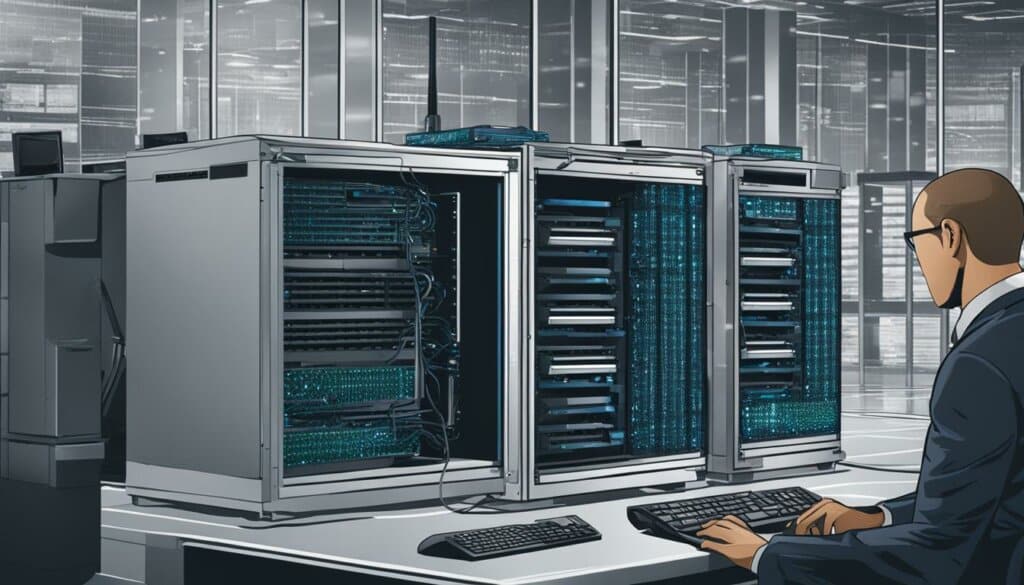
Investing in Cybersecurity for Educational Institutions
The increasing reliance on digital technology in educational institutions has given rise to a pressing need for robust cybersecurity measures. To ensure the safety and integrity of sensitive data, educational institutions must invest in a comprehensive cybersecurity system. With the ever-evolving landscape of cyber threats, an investment in cybersecurity is not just a necessity but a responsibility towards creating a safe digital environment for students and staff.
Investing in cybersecurity involves allocating resources for advanced tools and software that can detect and prevent cyber threats. By implementing firewalls, antivirus software, and other comprehensive protection measures, educational institutions can safeguard their networks from malicious activities. Regular updates of software and operating systems play a crucial role in staying ahead of emerging threats.
However, investing in cybersecurity is not limited to technological measures alone. It also involves fostering responsible user practices among students and staff. Training and education programs can help raise awareness about safe online practices, common scams, and cybersecurity threats. By instilling a culture of cybersecurity awareness and responsibility, educational institutions can create a strong line of defense against potential attacks.
| Investment in Cybersecurity for Educational Institutions |
|---|
| Allocate resources for advanced tools and software |
| Implement firewalls, antivirus software, and comprehensive protection measures |
| Regular updates of software and operating systems |
| Foster responsible user practices through training and education programs |
By investing in cybersecurity, educational institutions demonstrate their commitment to protecting sensitive data, ensuring the continuity of operations, and creating a secure learning environment. It is an essential step towards mitigating risks and preventing potential cyber threats that can have severe consequences for both students and staff.
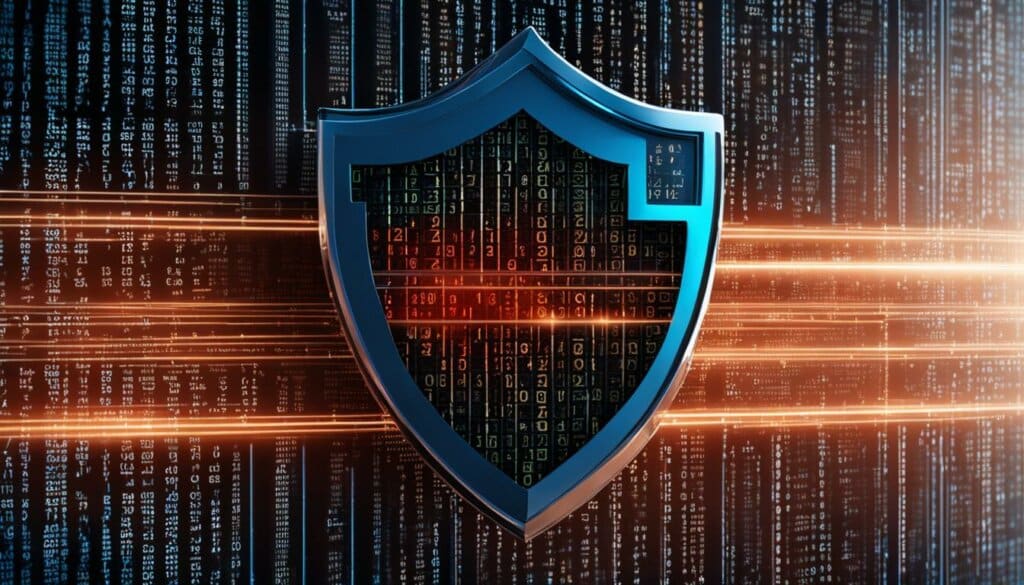
Faronics: Tailored Cybersecurity Solutions for Education
When it comes to cybersecurity in educational institutions, one size does not fit all. Educational settings have unique needs and challenges when it comes to protecting sensitive data and ensuring the overall security of their digital assets. That’s where Faronics comes in. As a leading provider of cybersecurity solutions, Faronics offers tailored solutions specifically designed to meet the cybersecurity needs of educational institutions.
With Faronics’ cybersecurity solutions, educational institutions can implement a comprehensive defense strategy that addresses the specific vulnerabilities and risks they face. Whether it’s protecting student data, securing networks, or ensuring the integrity of computer systems, Faronics has the expertise and tools to safeguard educational institutions against cyber threats.
By partnering with Faronics, educational institutions can benefit from advanced technologies such as Deep Freeze, which restores computers to a secure state with each reboot, countering malware threats and ensuring consistency and reliability in computer performance. This feature is especially vital in schools where system uniformity is critical.
| Faronics Cybersecurity Solutions | Benefits |
|---|---|
| Deep Freeze | Restores computers to a secure state with each reboot, countering malware threats and ensuring consistency and reliability in computer performance. |
| Faronics Anti-Virus | Detects and eliminates malware, protecting both networks and endpoints. |
| Insight | Provides comprehensive monitoring and management capabilities, allowing educational institutions to centralize IT management. |
| WINSelect | Enables educational institutions to control and manage classroom computers, limiting access to unauthorized software and enhancing security. |
Faronics’ tailored cybersecurity solutions empower educational institutions to enhance their overall security posture and protect their digital assets. By partnering with Faronics, schools and colleges can leverage advanced technologies and industry expertise to mitigate risks, safeguard sensitive data, and create a safe digital environment for students and staff.
Conclusion
In conclusion, enhancing cybersecurity in education is paramount in today’s digital age. Educational institutions must take proactive measures to protect sensitive data and mitigate cyber threats. By adopting a layered defense strategy and partnering with cybersecurity providers like Faronics, schools and colleges can bolster their security posture and safeguard their digital assets.
Investing in advanced tools, implementing best practices, and prioritizing regular training and updates are essential steps towards creating a safe and secure learning environment. Educational institutions must allocate resources and foster responsible user practices to combat evolving cyber threats effectively.
By enhancing cybersecurity in education, institutions can not only protect student and staff data but also ensure a seamless and uninterrupted learning experience. The continuous advancement of technology in the education sector necessitates a robust cybersecurity approach. It is through these concerted efforts that educational institutions can thrive in the digital age while safeguarding their most valuable assets.
FAQ
What is a layered defense strategy?
A layered defense strategy involves employing multiple layers of protective mechanisms across a network to safeguard data and systems in educational institutions.
How can strong DNS management enhance cybersecurity?
Strong DNS management can prevent cyberattacks by ensuring secure and reliable connections, reducing the risk of unauthorized access and data breaches.
Why is educated and vigilant staff important for cybersecurity?
Educated and vigilant staff can mitigate human error risks and contribute to a proactive approach to cybersecurity, increasing the overall security posture of educational institutions.
What is the role of centralized IT management in cybersecurity?
Centralized IT management allows for comprehensive monitoring and management of systems, ensuring timely detection and response to potential cyber threats.
How do routine network scans contribute to cybersecurity?
Routine network scans help detect and remove malware, identifying vulnerabilities and ensuring the integrity of systems and data in educational institutions.
What are robust anti-virus solutions?
Robust anti-virus solutions are software programs that detect and eliminate malware, providing an additional layer of protection against cybersecurity threats.
What is application whitelisting?
Application whitelisting ensures that only authorized software runs on the network, reducing the risk of malware infections and unauthorized access to systems.
Why are physical security measures important for cybersecurity?
Physical security measures protect the infrastructure of educational institutions, preventing unauthorized access to devices and systems that could lead to cybersecurity breaches.
How does Faronics’ Deep Freeze software contribute to cybersecurity?
Faronics’ Deep Freeze software restores computers to a secure state with each reboot, countering malware threats and ensuring consistency and reliability in computer performance in educational institutions.
What resources does CISA offer for cybersecurity in education?
CISA offers resources, programs, and tools for preventing, protecting against, mitigating, responding to, and recovering from cyber threats in educational institutions, including the Federal School Safety Clearinghouse and SchoolSafety.gov.
What are best practices for cybersecurity in educational institutions?
Best practices include educating everyone about safe online practices, implementing multifactor authentication, limiting access to servers and data, regularly updating software and systems, installing firewalls and antivirus protection, and having a data backup and recovery plan.
How does technology enhance cybersecurity in education?
Technology plays a vital role in enhancing cybersecurity, from implementing secure authentication to ensuring the secure storage of sensitive data in educational institutions.
How can educational institutions stay ahead of cyber threats?
Educational institutions can stay ahead of cyber threats by regularly updating software and operating systems, implementing comprehensive protection measures, and constantly staying informed about the latest threats in the cybersecurity landscape.
Why is backup and recovery important for cybersecurity?
Having a reliable backup and recovery plan is crucial in case of cybersecurity breaches, as it ensures the availability and integrity of data, minimizing the impact of such incidents in educational institutions.
What is the importance of investing in cybersecurity for educational institutions?
Investing in cybersecurity is crucial to protect sensitive data, prevent threats, and create a safe and secure learning environment for students and staff in educational institutions.
How can partnering with Faronics enhance cybersecurity in education?
Partnering with Faronics allows educational institutions to leverage tailored cybersecurity solutions that address their unique challenges, safeguarding digital assets and enhancing their overall cybersecurity strategy.
Source Links
- https://www.cisa.gov/audiences/educational-institutions
- https://www.faronics.com/news/blog/enhancing-cybersecurity-in-educational-institutions-with-layered-defense-strategies
- https://www.socinvestigation.com/how-educational-institutions-can-improve-cybersecurity-for-students-and-staff/




